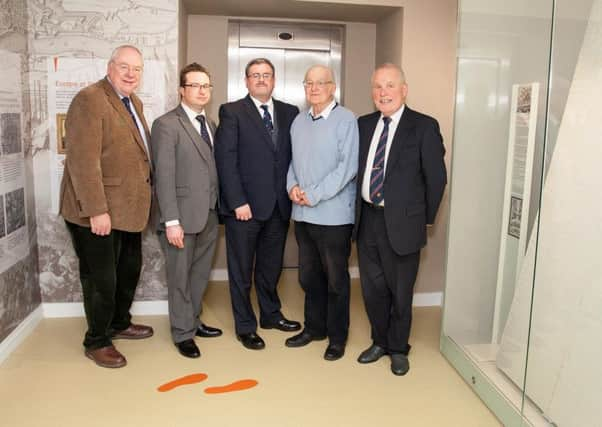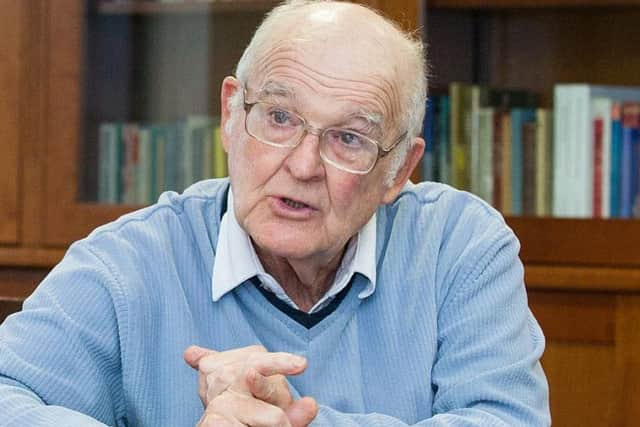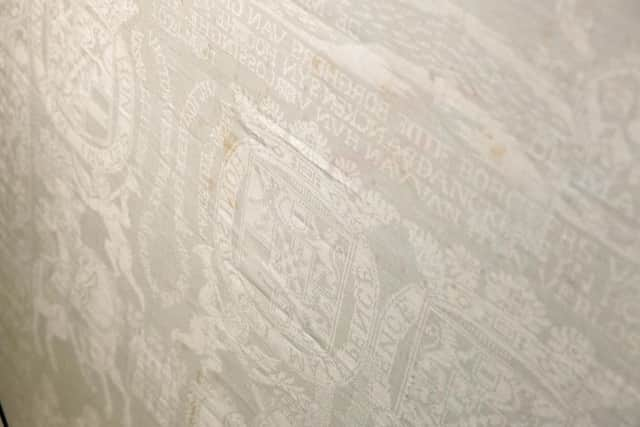Unfolding the story of King Billy’s tablecloth


The 1675 damask linen tablecloth is now the first port of call within Schomberg House, having been described as “a crown jewel” of the museum’s collection.
The item, which had previously been on loan but has since been bought by Friends of Schomberg House along with the Orange Order, was relaunched today on King William’s birthday.
Advertisement
Hide AdAdvertisement
Hide AdMuseum curator Jonathan Mattison said: “Having purchased the piece it gave us more freedom to display it.


“It’s best viewed when the light is passing at right angles across it so you can see the woven pattern and the detail.”
The tablecloth was presented to the then Prince of Orange in 1675 as a thank you gift for ending the French occupation of Grave by the leading politicians and businessmen of the Dutch city.
The tablecloth’s journey continues into the First World War when it made its way into the collection at Sandringham before being sold to benefit soldiers to a Christian charity known as the Panacea Society.
Advertisement
Hide AdAdvertisement
Hide AdIn 2000 the charity began disposing of some of its collection and Belfast man Samuel Wilson, whose father managed Ewart and Sons linen manufacturers, bought a batch of textile items.


At the bottom of a cardboard box Sam discovered the folded tablecloth and has spent more than 20 years researching the item.
He said: “The tablecloth has clearly been used, it’s been repaired. The speculation is that King William could very well have used this tablecloth.
“The practice was for nobility to dine before battles and they would have brought all their accoutrements with them including silverware and tablecloths.”
Advertisement
Hide AdAdvertisement
Hide AdMade in Holland using techniques pioneered in China, the tablecloth, measuring 103 x 86 inches, was woven on a special loom by three men in Courtrai, Flanders over the course of one year.
Sam said: “It was bleached in milk and buttermilk. That’s what gives it that fine sheen that you still see after nearly 350 years. It’s an item of unique cultural heritage.”
Orange Order leader Mervyn Gibson said: “This item is foundational. It sets the scene for what people come here to see. This is a world-class item that is here in our museum. We’re batting above our weight, other museums only have napkins of this. We have the full tablecloth.”
Mr Mattison said: “It’s one of the crown jewels of the collection here. It allows us to start the story of the Glorious Revolution and how it evolves the formal Orange tradition. It also allows us to explore the Huguenots who came to Ireland after 1685 and made their mark on the linen industry.”